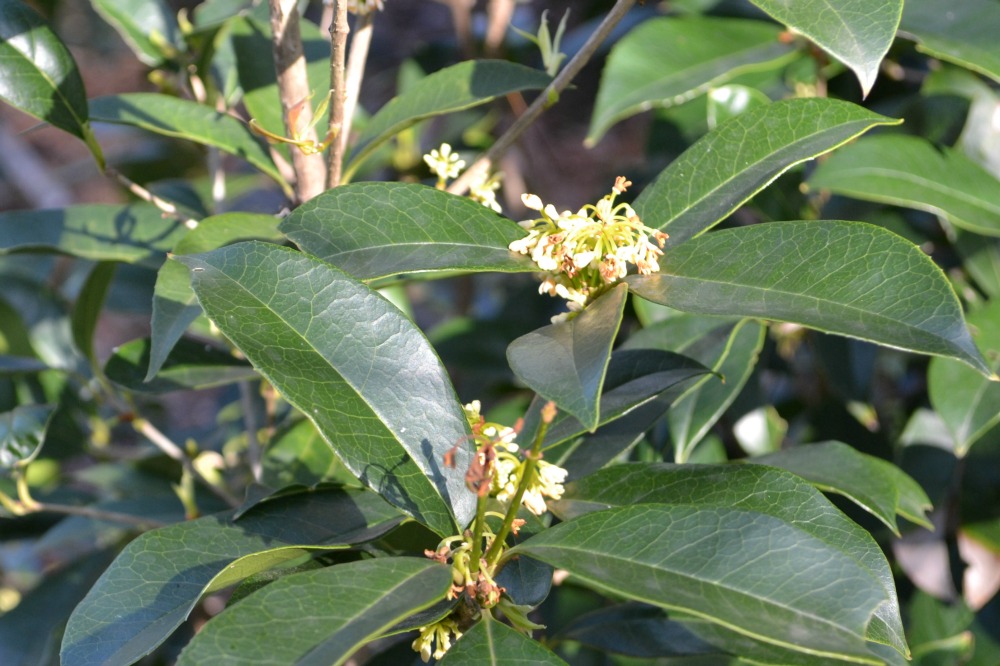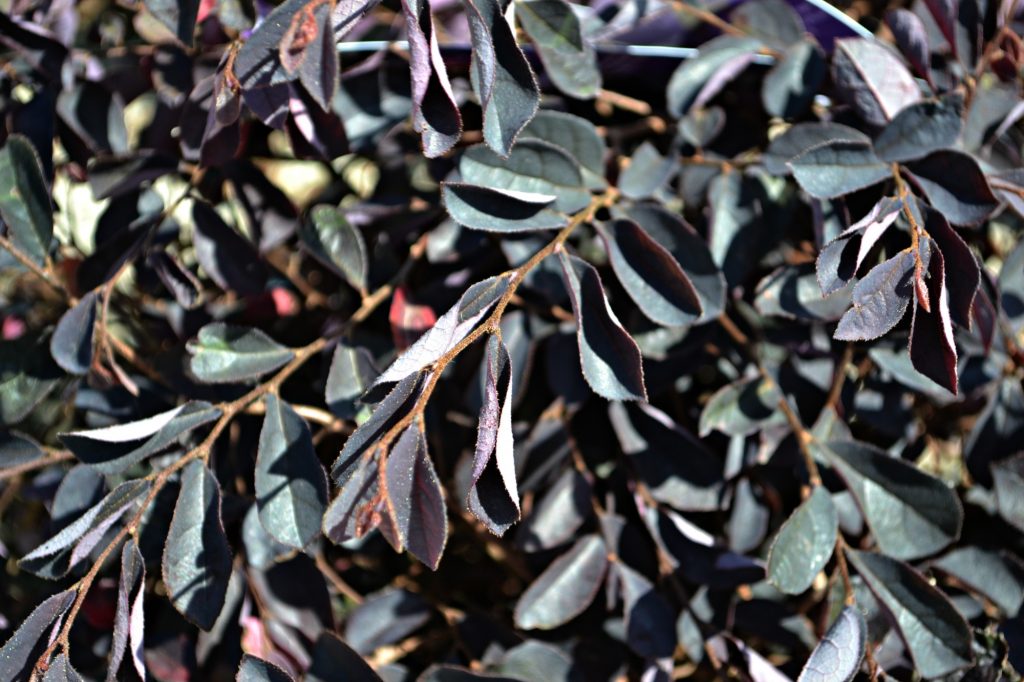Screening Plants
Does your neighbor remind you more of Sanford and Son than Mr. and Mrs. Tidy across the street? Maybe the sound or light of passing cars keeps you awake at night. Do you want to separate your garden into different landscape areas?

You may be in need of some landscape screening. There are many different ways to use plants to achieve these goals.
What Not To Do
Let’s go ahead and get past the idea of using a straight row of Leyland Cypress as a form of screening (monoculture). That is a bad idea for a number of different reasons, most importantly being that Leyland Cypress has many major pathogens that seem to be damaging and killing Leylands across the southeast (not to mention insect issues). In fact, it is not a very good idea to use one particular plant of any species in large numbers for screening purposes. Why is that?

Plants intended for visual barriers are usually planted closely together, or close enough so that they will grow into one-another. These plants are often genetically similar or even identical. This spells disaster when insects or diseases adapt to the over-abundance of food or host plant material, particularly when plants are planted close together. The closer the plants are planted, the shorter the distance a pest or disease has to travel for its next meal. A domino effect of damaged or dead trees or shrubs can soon follow. This is not to say that the same plant can not be planted beside itself in the landscape. Groupings of three, five, or seven of the same species are usually fine.
Mix It Up
If we can not use large numbers of one species, how can we create screening borders? The best horticultural answer is actually pretty easy. Mix it up! By using several different plant species in one border, we are increasing genetic diversity and scrapping the monoculture that occurs when one species is planted in mass by itself.
Not only will we have a healthier landscape by using different plants, we will also gain interest by mixing textures, forms, and using contrasting colors. Mixed screening borders also serve as great habitat for birds and other wildlife.
What To Use
There is a long list of plants that can be utilized for screening purposes. The most popular choice at Fairview is the Green Giant Arborvitae (Thuja plicata ‘Green Giant’). Its fast growth rate, columnar form, and dark green foliage make ‘Green Giant’ a great choice for screening. This plant is a great substitute for Leyland Cypress due to its nearly identical size, form and growth rate, without the pest and disease issues. ‘Green Giant’ can reach heights of 40’+ and widths of 6-8’, and is a wonderful lustrous dark green in the warm months and develops a unique bronze look in the winter.
Along the same lines of ‘Green Giant’ is the ‘Yoshino’ Japanese cedar (Cryptomeria japonica ‘Yoshino’). This is one of my personal favorite screening plants due to its regal form, changing colors, and excellent texture. ‘Yoshino’ is a pyramidal upright plant in its juvenile state that seems to begin to form cascading branches as it matures and gains height. New growth in spring is light green, maturing to dark green in the summer months, and bronzing during winter. It seems to have a finer texture in the landscape when compared to other upright conifers.
Tea Olive (Osmanthus) is another great evergreen screen suggestion with many great features including wonderfully fragrant flowers.

Fragrant Tea Olive (Osmanthus fragrans) will give just the right amount of privacy growing 10-15′ tall by 6-8′ wide with Apricot-scented white flowers in spring and sporadically throughout the year. Carl Wheeler Osmanthus is a taller, moderate growing selection reaching mature heights of 15-20′ with the same fragrant white flowers. Tea Olive is a must-have for southern landscapes!
Combining these conifers with broad leaf evergreen shrubs adds great texture contrast and depth to the landscape. Chindo viburnum (Viburnum awabuki ‘Chindo’) is a great choice to be mixed with conifers in the garden. ‘Chindo’ viburnum is an upright rounded to pyramidal shaped shrub with large glossy green leaves achieving heights of 18’+ and widths of 8’. With age, this plant will have clusters of small white flowers which will produce pendulous chains of red berries in the fall and winter months. The coarse texture of ‘Chindo’ combines well with other finer textured plants. Nellie Stevens holly (Ilex x ‘Nellie R. Stevens’) is another popular choice for screening. Nellie Stevens holly is a vigorous upright grower to 20’+ in height. Like many other hollies, it produces red berry clusters in the fall. It is important to note that most Nellies seen in commercial landscapes are routinely sheared to be maintained in a short, dense form. If left to Mother Nature, Nellie Stevens holly will have a much taller, almost columnar form.
If a screen of 20’ or larger is a little too big for a specific area, try using plants in the 6-8’ range. Loropetalums like ‘Ever Red’, ‘Sparkling Sangria’ or ‘Ruby’ (Loropetalum chinense var.) will add quite a bit of interest to any screening border.

There are many cultivars of Loropetalum available, the most popular of which have purple foliage and frilly, strap-like pink flowers. The specific cultivars mentioned are medium to large forms, attaining heights of 6-8’ and widths of 6-8’. These large, rounded, intense purple shrubs will add a splash of color in any border. The small diameter of the branches makes this plant move quite a bit with the wind.
In addition to Loropetalum, Distylium are becoming increasingly popular as hedges or screens with their deep, evergreen leaves. Linebacker Distylium is a great screening selection growing 8-10′ tall by 6-8′ wide. Linebacker has added interest with reddish new-growth foliage and reddish flowers in late January to early March.
These are only a few of the many screening plants available. It is important to note that privacy borders do not have to be constituted of only large evergreen shrubs. Any plants from large deciduous trees to perennials and annuals can be incorporated into the screening border for year-round appeal. If you want to refrain from erecting a fence along your property line, consider using some of these plants for screening.
Happy Planting!
Brad Rollins





